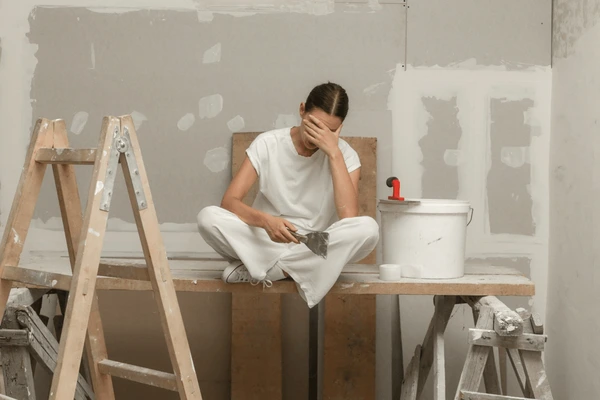When it comes to your home, the roof is a major player. It’s not just there to cap off the structure but to protect everything inside—your family, your belongings, and your investment. With the right roof, you can expect comfort, energy efficiency, and longevity. But with so many materials available and each with its own costs and lifespan, choosing the perfect one can feel like a daunting task. Don’t worry; we’re here to break it all down for you in a way that makes sense.
Contents
Choosing the Right Roofing Material
First things first, let’s talk materials. After all, there are several different options to choose from when selecting materials for residential roofing. Each one comes with its own set of advantages, so it’s important to find what best suits your home and climate. Here are some of the most popular options.
Asphalt Shingles
Asphalt shingles are the most common roofing material in the U.S. If you take a drive through a typical suburban neighborhood, chances are you’ll see these everywhere.
Cost – Asphalt shingles are affordable, making them a popular choice for budget-conscious homeowners.
Lifespan – You can expect around 20 to 30 years from a quality asphalt roof, depending on the climate and maintenance.
Why choose them? They’re easy to install, have decent durability, and come in a range of styles.
Metal Roofing
Metal roofs have come a long way from the corrugated sheets you might associate with barns. Now, they offer a sleek, modern look that’s gaining popularity in residential areas.
Cost – Metal roofing is more expensive than asphalt, but it pays off in the long run.
Lifespan – These roofs can last 40 to 70 years, making them one of the longest-lasting options available.
Why choose them? They’re energy efficient, can handle extreme weather conditions, and require minimal maintenance. Plus, they’re fire resistant!
Wood Shakes and Shingles
There’s something charming about a wooden roof, especially if you’re after that rustic, classic look. However, they do come with a few extra considerations.
Cost – Wood roofing is more on the premium side, and the cost of installation can add up.
Lifespan – Expect about 30 to 40 years if maintained well.
Why choose them? They offer a unique aesthetic and are great for insulation, but they do require regular maintenance and aren’t ideal for areas prone to wildfires or moisture-heavy climates.
Slate Roofing
Looking for something luxurious and timeless? Slate is the way to go. This natural stone material has been used for centuries and for good reason—it’s durable and stunning.
Cost – Slate is one of the most expensive roofing options, but it’s an investment that lasts.
Lifespan – A slate roof can last over 100 years, making it a great long-term choice.
Why choose them? Aside from their incredible longevity, slate roofs are extremely fire resistant and eco-friendly. But they’re heavy, so your home’s structure needs to be able to support them.
Clay and Concrete Tiles
Clay and concrete tiles bring a Mediterranean flair to homes, often seen in warm climates. These roofs are as durable as they are stylish.
Cost – They’re a bit on the pricier side, but their durability justifies the price.
Lifespan – You’re looking at a lifespan of 50 years or more.
Why choose them? They’re fantastic for hot climates, offering excellent heat resistance and insulation. Just keep in mind that they can be heavy, much like slate.
The Costs You Can Expect
Roofing costs can vary widely depending on the material you choose, the size of your roof, and where you live. Here’s a rough estimate to give you an idea of what you might be spending:
- Asphalt shingles – $5,000 to $10,000 for an average-sized home.
- Metal roofing – $10,000 to $20,000 depending on the material type.
- Wood shakes – $7,000 to $15,000.
- Slate roofing – $20,000 to $40,000 or more (yep, it’s an investment).
- Clay or concrete tiles – $15,000 to $30,000.
Remember, these are rough numbers. Factors like the complexity of your roof (how many peaks and valleys it has), the removal of an old roof, and labor costs can significantly impact the final price tag.
Lifespan and What Affects It
While the lifespan estimates we’ve given you are pretty solid, several factors can influence how long your roof lasts.
- Weather – Harsh conditions like heavy snow, high winds, or extreme heat can shorten your roof’s life.
- Maintenance – Regular inspections and repairs are crucial. A little TLC goes a long way in keeping your roof in top shape.
- Installation – A poorly installed roof will fail faster, no matter how good the material is. Make sure to hire experienced professionals for the job.
Quick Tips for Extending Your Roof’s Life
- Clean the gutters regularly to prevent water backup and potential damage.
- Check for damage after storms and replace any loose or missing shingles right away.
- Trim overhanging branches that could cause debris to collect or fall on the roof during bad weather.
Getting the Most Out of Your Roof
Once you’ve chosen the perfect roofing material and installed it properly, the next step is maintenance. A well-maintained roof can last decades, and in some cases, over a century. It’s worth investing the time and effort to keep it in top condition.
Don’t forget that different materials have specific maintenance needs. For example, wood shingles need to be treated for moisture regularly, while metal roofs benefit from occasional rust prevention.
Also, consider future-proofing your roof by installing energy-efficient features like reflective coatings or solar panels. Not only can these features reduce your energy bills, but they can also extend the life of your roof.
Wrapping It Up
Your roof is one of the most important parts of your home, and choosing the right material is a decision that impacts your home’s longevity, energy efficiency, and style. Whether you go with cost-effective asphalt or luxurious slate, it’s important to understand the costs, lifespan, and maintenance involved. Take your time, do your research, and you’ll end up with a roof that not only protects your home but looks good doing it.



